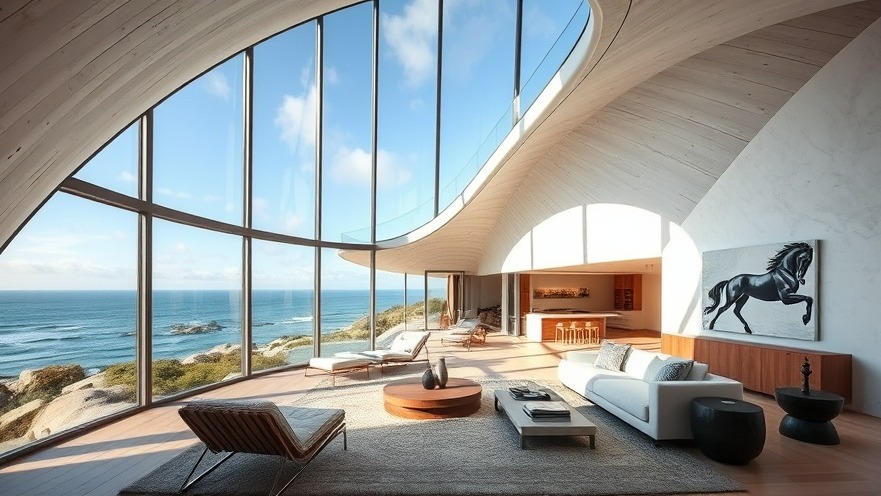
Transform Your Workspace with Stylish Ergonomics
In the scenic backdrop of Palm Desert, the historic Wave House has been magnificently outfitted by DWR and renowned designer Paul Smith, showcasing a blend of vibrant striped and plaid furniture. This innovative design not only captures aesthetic appeal but also provides a refreshing take on how we can create functional, comfortable workspace environments that cater to remote working needs.
Why A Stylish Workspace Matters
For digital nomads, a workspace that inspires creativity and productivity is crucial. The Wave House, with its striking interior, reflects a philosophy that transcends just style—it embodies well-being and comfort. Ergonomic design principles tell us that a well-curated workspace can lead to enhanced focus, better posture, and overall improved health. By integrating vibrant designs like those found in the Wave House, you can invigorate your remote working environment.
Key Pieces from Wave House That Enhance Ergonomics
When selecting furniture for your workspace, consider pieces that provide both comfort and visual inspiration. The striped and plaid accents from Paul Smith not only stand out but promote a lively atmosphere. Look for chairs that offer lumbar support, desks at the right height, and accessories that facilitate an organized area. Flexibility is also vital; modular pieces that can be rearranged benefit both style and function, echoing the adaptable essence of the Wave House.
Balancing Style and Functionality
Amidst the beauty of design, practicality cannot be overlooked. Incorporating color into your workspace, such as the dynamic hues seen in the Wave House, has psychological benefits. Bright colors can stimulate the mind, leading to heightened productivity and creativity. However, it is essential to balance vibrant colors with calming elements, ensuring that the workspace remains a refuge against distractions.
Tips for Designing Your Own Ergonomic Workspace
Select Functional Furniture: Choose desks and chairs that support ergonomic health. For instance, chairs with adjustable settings and desks that allow for various work positions are ideal.
Incorporate Natural Light: Position your workspace near windows if possible. Natural light is beneficial for mood and productivity.
Personalize Your Space: Use colorful decorations or your favorite art pieces to make your workspace inviting. Just like the Wave House, your workspace should reflect your personality.
Minimize Clutter: Keep your desk tidy with storage solutions that work for you. An organized workspace enhances focus.
Ensure Tech Efficiency: Invest in ergonomically designed tech accessories like keyboards and mousepads that aid in reducing strain.
Future Trends in Workspace Design
The trend of merging aesthetics with functionality is set to rise, particularly among remote workers. The increasing demand for stylish yet practical workspaces signals a shift in how we approach design. As more professionals carve out remote work lifestyles, incorporating elements from visionary designs like Wave House can guide us in personalizing our spaces effectively.
Conclusion: Redesigning Your Work Environment
Creating an inviting and efficient workspace is achievable with thoughtful design choices. The Wave House is a testament to how artistic flair and ergonomic integrity can coexist. Whether you're a digital nomad or simply looking to enhance your home office, take a cue from innovative designs, and invest in furniture that aligns with ergonomic principles. Your comfort and productivity depend on it!
 Add Row
Add Row  Add
Add 




Write A Comment